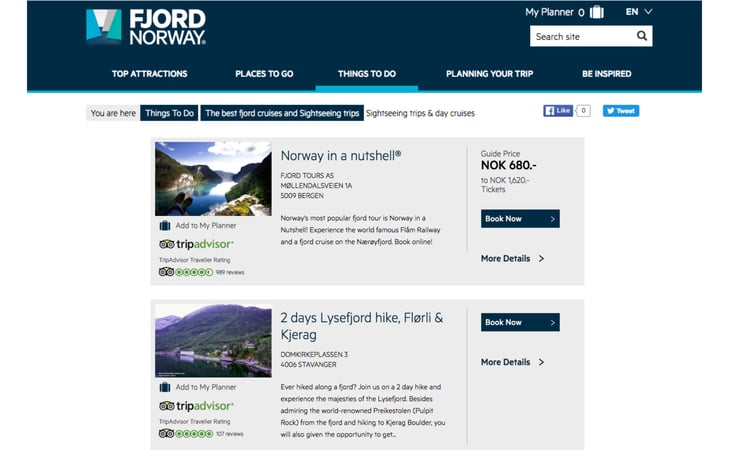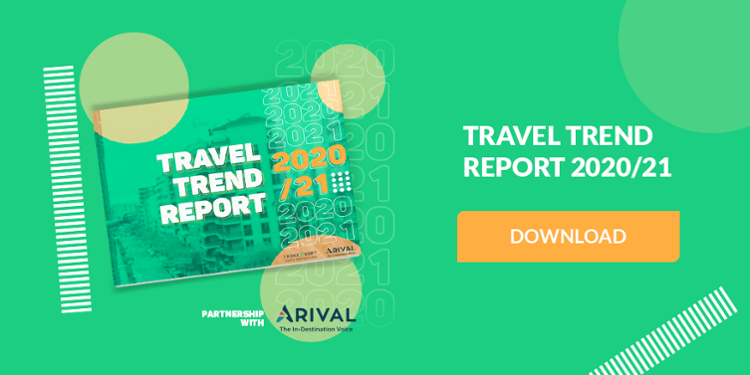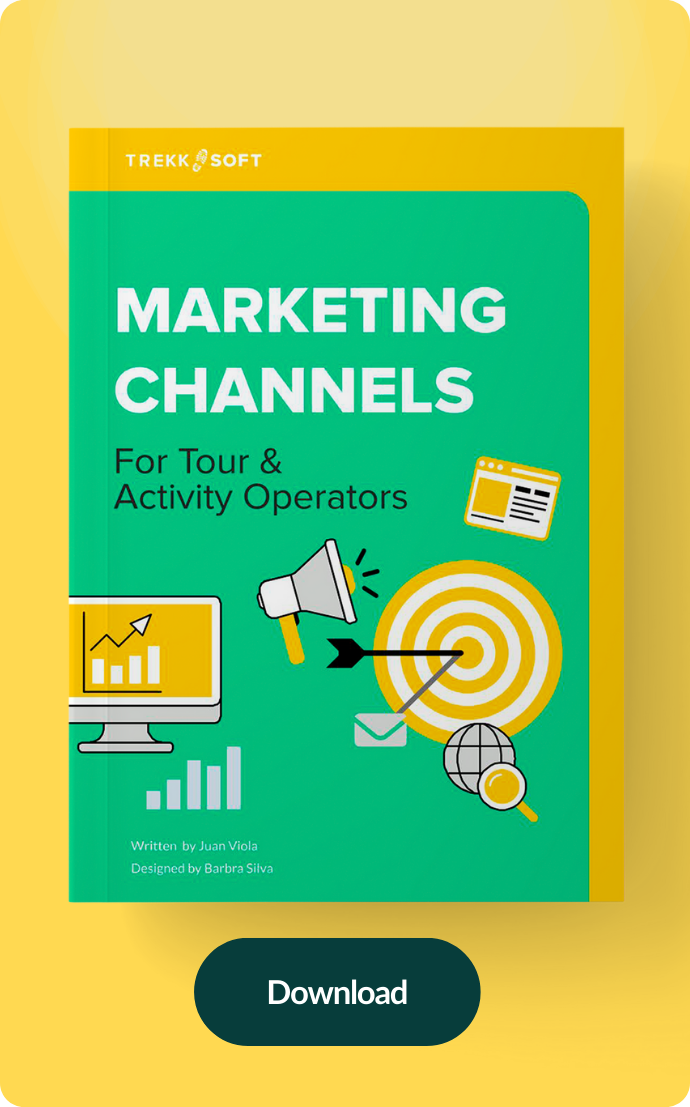This article was first published in 2016 and has recently been updated.
Marketing your tour or activity business in an ever evolving space can be tricky. Having your business online can give you a head start over your competitors, especially if your destination is up-and-coming. If you operate in a well-established destination, your marketing strategies are likely to change too.
With that in mind, here are 7 alternative marketing strategies to help you get more bookings.
1. Partner with other local businesses
Partnering with other businesses (accommodation providers or other tour and activity providers) in your destination can be a great way to market your product and your destination. When tourists visit your area, they view the entire stay, (activities, tours and accommodation) as one entire experience. You can deliver a great overall experience to visitors by bundling your products. It also saves your customers time instead of researching and comparing different individual items that make up a whole trip.
Here are some insights on collaboration from Simon Bosshart of Switzerland Tourism:
"The tourism business environment is driven by SMEs who are not used to working with one another. They need to start working together, bundling their services together and distributing it on one specific channel. Let's use the example of skiing. Most travellers will first go to a tourism office to learn about skiing and where to rent equipment. But how do they find the right equipment? Where can they find the best prices? If they manage to sort that out, they need to figure out the different types of passes - do they purchase a pass for one day, multi-day, one week? As for travellers wanting to learn how to ski, who do you get? How do you find the right instructor?
Customers end up wasting so much time find information and comparing products and prices. The process can also be incredibly intimidating. The solution must be to simplify this whole process, for instance creating a "beginner experience" package where different businesses work together. They also need to be prepared to pay a commission to their distributors. There many suppliers who are B2C driven and think that commission is a waste but you need to do this if you want to reach an overseas market."
- Simon Bosshart, Director of Asia Pacific and Global Accounts of Switzerland Tourism.
2. Selling your experiences on niche or local OTAs
Working with an OTA is useful as it provides you a platform to reach the right audience.
Destination-specific OTAs like Swiss Activities or niche OTAs like Adrenalin Hunter can help you get your experiences in front of the right audience. What's great about working with OTAs is that you only pay them when you successfully take the customer on your tour. With such a business model, OTAs are just as invested in your success and they are in their own.
Learn how our Channel Manager streamlines bookings from multiple sales channels
3. Work with your local DMO
Many destinations now have a destination marketing organisation that focuses solely on promoting your destination to the world. TrekkSoft has had the pleasure of working with a few DMOs such as Fjord Norway to transform their websites into OTAs as well, allowing local suppliers to promote and sell their services on their website.
If this is unavailable on your local DMO's site, I would suggest getting listed in their directory. To get more exposure, why not offer to write a blog post or two for them? You could also let them use pictures from your tours to promote the destination.
You can also read about Visit Metora, a tour company that turned into a DMO when the founders realised that the destination wasn't being marketed effectively to the world.

4. Get on directories and listings
People often head over to Google, the largest directory ever, when they start planning for an upcoming trip. From there, they move on to TripAdvisor, Expedia, Kayak.com and so on to book and pay for different travel products like accommodation, transport, tours and activities.
This means that you need to be where your customers are searching for information. This includes claiming your business on Google, TripAdvisor and Yelp (the last one is particularly important if you operate in America). If you have extra time, create pages on social media accounts like Facebook and Instagram and update them regularly with a simple photo or two.
5. Give out discount codes to customers to share with their friends
To do this, you first need to build your mailing list. Once you've built up a good list, make an effort to stay in contact with your customers by sending them updates every month or so. You can also send them discount codes to share with their friends.
Nothing beats word of mouth marketing. Having a happy customer share a great deal with their friends will surely help you get more bookings.

6. Focus on your content
If you have a website, be sure to include a blog and make time for it. Nothing beats good (i.e. valuable) content. It's great for SEO and can generate traffic to your website. It also demonstrates insider knowledge about the destination, building credibility among potential customers.
According to Mitch Meyerson, to create good content, you're going to need these four things:
- Extremely targeted content catered to a very specific group of readers.
- It contains high-quality visuals like images, screenshots, infographics, or videos.
- It’s inspiring or triggers the wanderlust in your readers.
- It’s on a site with a clean and professional design.
7. Experiment with PPC advertising on Google
Pay-per-click advertising is a great strategy that small businesses like tour and activity companies, can experiment with to get more bookings. The idea is that you bid on a keyword (i.e. words people enter into Google's search bar when they're searching for something) and your company's website will turn up in the search results page. When someone clicks through to your website, you pay for that click. If they don't, you don't pay.
It's really not as complicated as it sounds and can be a very effective way to drive more bookings to your website.
Get the latest insights into digital booking trends for tours, activities and attractions




